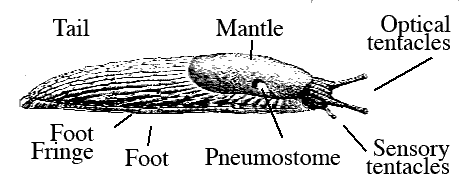Adaptation
Lucilla singleyana has had to evolve some adaptations to be able to thrive in Wisconsin's harsh conditions. Here are just a few of those adaptations.
All snails require a moist environment in order to prevent drying out. Lucilla singleyana prefers a slightly dryer climate than other snails. To ensure that this snail remains moist enough to survive, it secretes a mucus from its skin cells that lubricates the snail. This mucus is also used during hibernation when the snail is in a lowered metabolic state.
The Smooth Coil snail has a certain homing ability that seems almost extra-sensory. This snail does not venture far from its home in order to remain safe. By never venturing very far from its known environment, the snail eliminates the risk of running into new and unknown dangers beyond its home.
Snails have developed certain adaptations for movement and feeding. To create movement, the snail pushes fluid within its body forward along its foot and creates waves that slowly move it forward. When it comes to feeding, Lucilla singleyana has developed a rough radula that aids in feeding. To learn more about how the radula affects this snail's feeding abilities, click here.
Like all terrestrial snails, Lucilla singleyana has developed a lung that allows it to breath on land. The opening to this lung is a pneumostome.
Here is a diagram of the pneumostome of a slug, a close relative of land snails.
